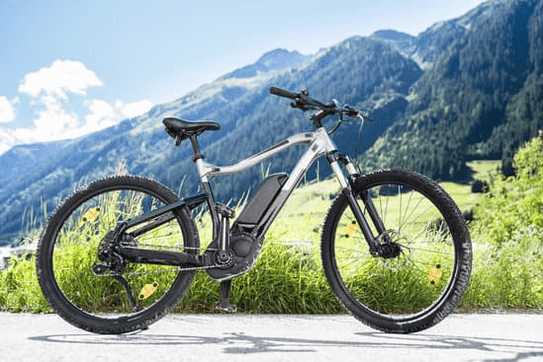E-Bike Battery Fully Charged But Not Working
Envision this scenario: you're ready for an exhilarating ride on your e-bike, you plug it in, watch for the battery to discharge completely, and then.. nothing happens. For many owners of electric bikes, the battery that offers power but obstinately won't start their bike is a source of irritation.
Working with e-bikes for years has taught me that this problem is more often than one may imagine. As a specialist in e-bike maintenance and diagnostics, I have dealt with innumerable instances of batteries that are fully charged but not operating.
The issue frequently resides in the intricate electrical systems of our contemporary motor-assisted horses, where connections must be spotless and Battery Management Systems (BMS) rule supreme.
Finding the reason why a properly charged battery won't turn on can seem like a complex puzzle to solve, but don't worry—there is practical advice inside. This post will provide you with information and answers that may help you turn your irritation into understanding and relief.
Stay tuned—solutions are on the way!

Key Takeaways
- Check your e-bike's Battery Management System and connections with a multimeter to find power flow issues.
- Look for battery malfunctions like blown fuses, cell imbalances, or faulty connectors that could cause charging problems.
- Inspect wires and connectors regularly for loose parts or corrosion to prevent disconnections that stop your bike from working.
- Prevent overheating by keeping the e-bike battery away from extreme temperatures and not overcharging it.
- Keep the battery healthy with routine inspections, cleaning connection points, using balanced charging practices, and updating firmware.
E-Bike Battery Fully Charged But Not Working: Identifying the Issue
When a fully charged e-bike battery fails to work, it could be due to various issues such as BMS and power flow issues, battery malfunctions, disconnections, thermal problems, and visual inspections are key in identifying the root cause of the problem.
BMS and power flow issues

The brains behind battery management and protection in your e-bike are called the BMS. It ensures that the cells are safe and function as a unit. This system occasionally experiences issues that prevent power from reaching your bike, even when the battery is fully charged.
If you've charged up but are still unable to ride, there may be a problem with the BMS or with the wiring. Visit this BMS website.
Take out a multimeter and measure the voltage in your battery to address these power flow problems. There's probably a problem with your BMS or the connections between it and the battery cells if the numbers are less than expected or are zero.
Check for any damaged or loose parts that might be interfering with the supply of power.
Battery malfunctions

After checking for BMS and power flow issues, it's essential to troubleshoot battery malfunctions. When an e-bike battery is fully charged but not working, the problem might be a blown fuse, cell imbalance, or connector issue.
Using a multimeter can help check voltage and wiring problems, providing valuable insight into the underlying cause. It's important to note that frequent charging or a faulty charger can lead to depletion and failure to charge.
Proper maintenance practices such as regular inspections and cleaning connectors are crucial in preventing these issues.
By conducting visual inspections and thorough checks of wiring connections, cyclists can identify potential malfunctions early, ensuring their e-bike batteries remain in optimal condition.
Disconnections
Check for any loose or corroded connections between the battery, wiring harness, and motor. Use a multimeter to test the continuity of the wires and connectors. Corrosion can disrupt power flow, leading to issues with the e-bike's performance.
Ensure all connections are secure and free from rust or damage to prevent potential power failure due to disconnections.
Observe visual indicators of disconnections such as frayed wires or damaged connectors. Any visible signs of wear and tear should be addressed promptly to avoid electrical malfunctions in your e-bike system.
Thermal Problems

When the e-bike battery gets too hot while charging or use, thermal issues may occur. Overheating can result in decreased battery life, decreased power output, and even potential safety risks.
It's critical to keep the e-bike battery out of direct sunlight and extremely cold temperatures to prevent thermal problems. Additionally helpful in reducing thermal issues are adequate ventilation when charging and avoiding overcharging.
Maintaining a healthy e-bike battery and guaranteeing peak performance during rides requires proactive measures to solve thermal issues. The best way to avoid thermal problems with electric bike batteries is to regularly check the battery's temperature and take prompt action if overheating happens.
Visual Inspections
Examine the cabling, connectors, and battery of your e-bike for any indications of corrosion or physical damage. Check the battery's voltage readings using a multimeter to make sure they meet the requirements.
Check to see if any connections are loose and confirm that every part is fastened firmly. Keep an eye out for any error codes or unusual readings on the display panel; these could point to a problem with the battery or electrical system.
Verify that all of the fuses are intact and check for blown ones since this can affect how well the battery powers your e-bike. During visual inspections, if you find any irregularities, take quick action to keep the battery system on your electric bike operating at its best.
Preventive Maintenance Practices for a Healthy E-Bike Battery
Regular inspections, cleaning connectors, proper charging habits, balanced charging, and firmware updates are essential preventive maintenance practices to ensure a healthy e-bike battery.
Regular Inspections
Maintaining the best possible performance from your e-bike battery requires routine checkups. Check the wiring and battery voltage with a multimeter to make sure there are no loose or broken connections.
Check the LCD frequently for any problem warnings or unusual power meter values.
You should include a visual inspection into your routine to look for indications of corrosion, wear, or damage on connectors and wiring. When using your e-bike, pay attention to how it acts because this can also assist spot possible problems before they get out of hand.
By carrying out these routine checks, you can make sure your e-bike functions properly and identify any possible battery issues early on.
Cleaning Connectors
E-bikers can prevent charging problems, pedal assist malfunctions, and electrical display issues by regularly inspecting and cleaning their connectors. By adhering to preventive maintenance practices, such as cleaning connectors, e-bikers can maintain a healthy battery connection and lower the risk of power-related issues during rides. Appropriate maintenance of connectors is crucial to avoid fuse blow-ups due to short circuits or over-current issues. Ensuring that the connections are clean contributes to preventing disconnections and thermal issues that may arise from improper battery connections.
Proper Charging Habits
To maintain the health of your e-bike, make sure the battery is charged after each ride. Try to avoid running a depleted battery for an extended period since this can harm the battery's cells. To ensure optimal performance from your e-bike battery, charge it at room temperature rather than exposing it to extreme heat or cold.
Balanced charging is necessary to keep your e-bike's lithium-ion batteries operating for as long as possible. Make sure the charger you choose is specifically designed for the model of the e-bike you own to prevent harm.
Regularly check and clean the connections on the battery and charger to ensure proper contact and prevent connectivity issues that could lower the efficacy of charging.
Balanced Charging
Maintaining the lifespan and health of your e-bike battery is made easier with balanced charging. Overcharging and undercharging, which can result in an early battery failure, are avoided by charging every cell at the same voltage.
This procedure also guarantees your electric bike's safety and best performance. By include balanced charging on a regular basis in your maintenance regimen, you can steer clear of possible problems like cell imbalance or declining battery capacity.
By preventing these issues with balanced charging, you may extend the life of your e-bike battery and avoid future expensive replacements. This brings us to our next important topic: "Firmware updates" for keeping your e-bike battery in good working order.
Firmware updates

To guarantee optimal performance and preserve the health of your e-bike battery, think about updating the firmware on a regular basis. Better battery management and smoother power flow are made possible by these updates, which can also fix software bugs and improve the operation of the Battery Management System (BMS).
You can extend the life of your e-bike battery pack and avert possible issues by being proactive with firmware updates. Remember that keeping your electric bike dependable and efficient requires regular firmware updates.
Conclusion

To sum up, troubleshooting an e-bike battery that is completely charged is essential for continuous riding. The effectiveness and lifespan of the battery on your e-bike can be guaranteed by following the suggested maintenance procedures.
By putting these tactics into practice, you can ride more smoothly and perform better. For further help, try getting professional assistance or investigating online resources dedicated to e-bike maintenance.
By taking these preventative steps, you can take control of your e-biking experience and guarantee smooth rides each and every time you hit the road!
FAQs
1. What do I do if my e-bike's fully charged battery isn't working?
First, check for connection issues or fuse problems that might stop the power from reaching your bike's system.
2. Why won’t my electric bike turn on even with a full battery?
Your e-bike may not power on due to electrical problems like a faulty display or wiring issues, which require troubleshooting.
3. Can battery issues cause my e-bike pedal assist to stop working?
Yes, if your lithium-ion battery has an internal issue, it can affect the motorized bike's pedal assist and other electric vehicle functions.
4. What should I look at if my e-bike is not moving when I try to ride it?
Look into common e-bike troubleshooting steps such as checking the connections and ensuring there are no maintenance issues with the bike itself.
5. If my electric bike's display is not functioning properly but the battery is charged, what could be wrong?
Electric bike troubleshooting may reveal that there are either connection issues between your display and controller or specific electric bike maintenance needs to be addressed.






